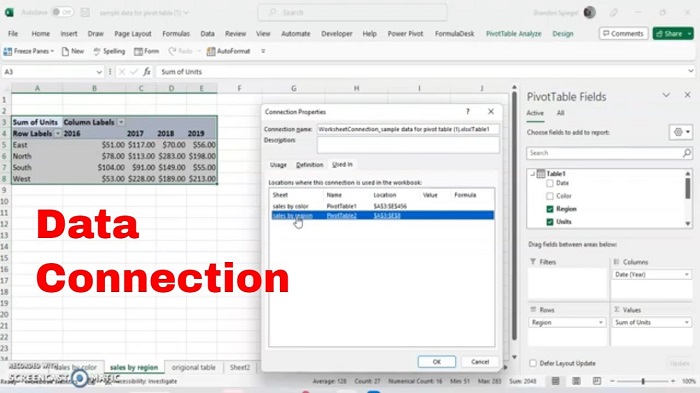Pivot Tables in Excel are among the most powerful features available for data analysis. They allow users to summarize, analyze, explore, and present data efficiently. One of the most frequently asked tasks in data analysis is counting and analyzing unique data. In this article, we’ll delve into the magic of Pivot Tables in Excel for counting and analyzing unique data, highlighting their features, benefits, and some advanced tips to get the most out of this powerful tool.
Understanding Pivot Tables
A Pivot Table is a data summarization tool that is used in the processing of data in spreadsheets. Pivot Tables automatically sort, count, and total the data stored in one table or spreadsheet and display the results in a second table showing the summarized data. This can be particularly useful for large datasets where manually counting and sorting would be time-consuming and error-prone.
Setting Up Your Data
Before creating a Pivot Table, ensure your data is well-organized. Each column should have a unique heading, and there should be no blank rows or columns within your data range. Proper organization ensures that the Pivot Table will work effectively and provide accurate results.
Creating a Pivot Table
- Select Your Data Range: Highlight the data range you want to analyze.
- Insert a Pivot Table: Go to the
Inserttab on the Ribbon, then clickPivotTable. Choose whether you want the Pivot Table to be placed on a new worksheet or the existing one. - Arrange Your Data: Use the PivotTable Field List to drag and drop fields into the Rows, Columns, Values, and Filters areas.
Counting Unique Values
By default, Pivot Tables count the total number of occurrences of each value. However, counting unique values requires a bit more setup. Here are the steps to count unique values in a Pivot Table:
- Add a Helper Column: In your dataset, add a helper column to create a unique identifier for each row. For example, you could concatenate multiple columns to ensure each row is unique.
=A2&B2&C2
- Create a Pivot Table: As described above, create a Pivot Table based on your data.
- Add Fields: Drag the helper column to the
Valuesarea of the Pivot Table. Excel will default to counting these entries. - Summarize Values By Count: Ensure that the value field settings are set to
Count.
Analyzing Unique Data
Once you have your unique counts, you can perform various analyses to gain insights from your data. Here are a few common analyses:
- Frequency Distribution: Understand how frequently each unique value appears. This is useful for identifying trends and patterns in your data.
- Cross-Tabulation: Compare the relationship between two or more fields. For example, you can analyze how different categories of data relate to each other.
- Filtering Data: Use Pivot Table filters to focus on specific data points. This can help in narrowing down large datasets to the most relevant information.
Advanced Tips for Pivot Table Analysis
- Calculated Fields: Create calculated fields to perform custom calculations on your data. This is useful for more complex analyses that go beyond basic summarization.
- Go to
PivotTable Analyze->Fields, Items, & Sets->Calculated Field. - Define your formula using the existing fields.
- Go to
- Slicers: Add slicers for easy filtering. Slicers provide a visual way to filter data, making it easier to interact with your Pivot Table.
- Go to
PivotTable Analyze->Insert Slicer.
- Go to
- Grouping Data: Group data within your Pivot Table to analyze data by intervals. For example, you can group dates by months or years, or numerical data into ranges.
- Right-click on the data in your Pivot Table and select
Group.
- Right-click on the data in your Pivot Table and select
- Pivot Charts: Create Pivot Charts to visualize your Pivot Table data. Pivot Charts are dynamic and will update as your Pivot Table changes, providing a powerful way to visualize data trends and patterns.
- Go to
PivotTable Analyze->PivotChart.
- Go to
Conclusion
Excel Pivot Tables are incredibly powerful for counting and analyzing unique data. By understanding how to set up your data, create Pivot Tables, and use advanced features, you can unlock a wealth of insights from your datasets. Whether you are a beginner or an advanced Excel user, mastering Pivot Tables will undoubtedly enhance your data analysis skills, making your workflow more efficient and effective.
In summary, Pivot Tables are not just tools for simple data summarization; they are versatile instruments for deep data analysis, capable of transforming raw data into meaningful insights. By leveraging the magic of Pivot Tables, you can make data-driven decisions with confidence.

